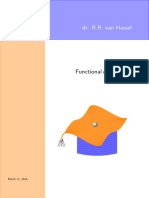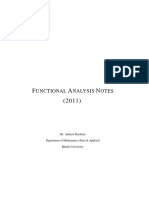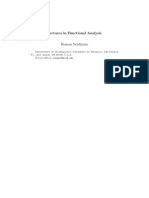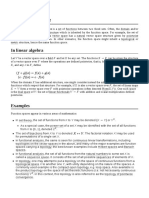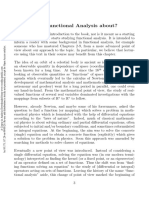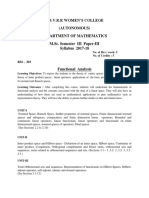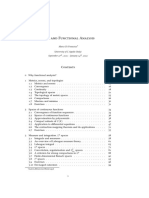0% found this document useful (0 votes)
118 views1 pageFunctional Analysis
Functional analysis is a branch of mathematics that studies vector spaces with additional structures like inner products or norms, and the linear functions between these spaces. It originated from studying spaces of functions and transformations between them, like the Fourier transform. This proved useful for solving differential and integral equations. Functional analysis examines infinite-dimensional vector spaces using topology, in contrast to linear algebra which focuses on finite-dimensional spaces without topology. A key aspect is extending measure, integration, and probability theories to infinite dimensions.
Uploaded by
notkhaloodyCopyright
© © All Rights Reserved
We take content rights seriously. If you suspect this is your content, claim it here.
Available Formats
Download as PDF, TXT or read online on Scribd
0% found this document useful (0 votes)
118 views1 pageFunctional Analysis
Functional analysis is a branch of mathematics that studies vector spaces with additional structures like inner products or norms, and the linear functions between these spaces. It originated from studying spaces of functions and transformations between them, like the Fourier transform. This proved useful for solving differential and integral equations. Functional analysis examines infinite-dimensional vector spaces using topology, in contrast to linear algebra which focuses on finite-dimensional spaces without topology. A key aspect is extending measure, integration, and probability theories to infinite dimensions.
Uploaded by
notkhaloodyCopyright
© © All Rights Reserved
We take content rights seriously. If you suspect this is your content, claim it here.
Available Formats
Download as PDF, TXT or read online on Scribd
/ 1
















